Figure 1: Degenerative osteoarthritis of the lumbar spine in a 2.2-year-old male rat (Nimbus).
Case history and photos
History
Nimbus, shown below in photos, was a well cared for 2 year 2 month old male rat. He presented with hind limb paresis, but was in otherwise relative good health with no known injuries. He was adequately housed, and allowed free time outside the cage. Exercise time was supervised with other male cage mates. He was maintained on a varied and nutritious diet along with supplemental treats.
Initial Clinical Signs
Signs were first seen in Nimbus at just over 2 years of age as asymmetry when sitting, and a loping gait when running, tending to favor one side. He was otherwise active and agile.
Over the next 2 months, the following signs and symptoms presented:
Tail dragging on the floor rather than being held up straight.
Clumsiness on climbing and jumping.
Tendency to park his rear end down, rather than sit up on his haunches.
Flat footed walk (seen in Photo ), progressing to slipping laterally (like walking on ice).
Lying flat to groom or eat, supported with elbows on the ground.
Having to hold onto something when standing up on his hind legs (always flat-footed, not up onto toes).
Squeaking when picked up on occasion.
Weight loss (down from 590 to 565 gm).
Excessive porphyrin on bedding, but no sneezing or other signs of respiratory illness (treated for 3 weeks with Baytril + doxycycline with little improvement).
Lethargy (tiring easily, not his usual active self but mopey).
Only mild symptoms until a week or so before consulting the vet. Then rapid onset of more serious signs like the lethargy, awkwardness at climbing ladder, etc.
Physical examination showed: pain along base of spine when pressed, no problem with legs or hips.
X-rays showed: compression and arthritis of a few discs in the lower spine (just above hips).
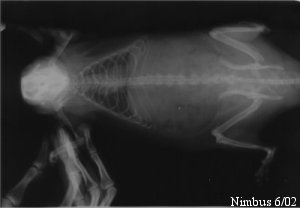 Photo 1: Shows compression in the spine at the area of the hips. |
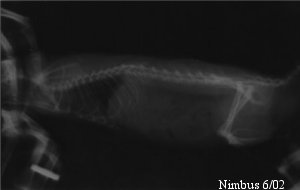 Photo 2: Shows a lateral view of the spine. |
Diagnosis
Degenerative osteoarthritis of the lumbar spine
R/O spinal stenosis (narrowing of the spinal canal)
R/O radiculomyelopathy (pathologic condition of the spinal cord and nerve roots) related to compression of the lumbar spine.
Treatment
Metacam (NSAID) for pain relief and reduced inflammation. Initial dose 10mg/kg, decreased incrementally over several days to as low as possible while still being effective. Given once a day.
Glucosamine-Condroitin at 50 mg decreasing to 25 mg , given twice daily.
Outcome
Improvement seen within 24 hours on the Metacam. Nimbus appeared more active, energetic and enthusiastic for play time. Weakness in hind legs remained about the same, but obvious pain relief.
Metacam dose was decreased from 10mg/kg to 5mg/kg over a 1 week period. Dosages given lower than this, he became lethargic and mopey again. No improvement was seen in leg strength.
Follow-up
One month later, leg strength deteriorated rapidly. He was at this time having difficulty grooming his head/chin area with his feet. He was still able to move about, but it was slow and awkward. This required modification to his cage by lowering food bowl, replacing ladder with low ramp. Grooming was taken over by owner. Minimal results if any seen with Glucosamine-Chondroitin.
Photos
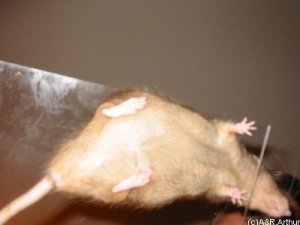 Photo 3: Shows splayed hind feet. Toes of left hind foot tend to curl in. |
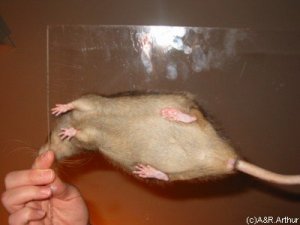 Photo 4: Shows view of stance. |
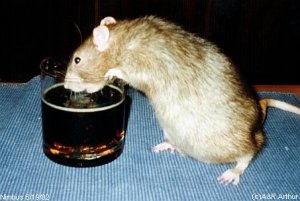 Photo 5: Notice how hind feet are flat against flooring when standing as opposed to normally being up on toes. |
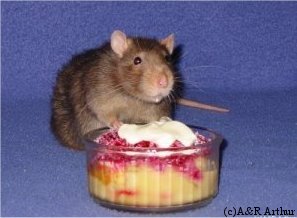 Photo 6: Sits when eating for support. |
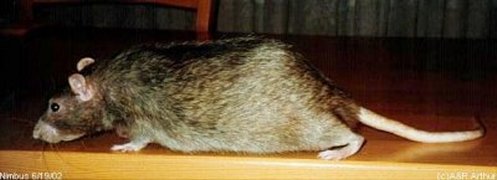 Photo 7: Shows again flat-foot stance of hind limbs. Also note tail is being dragged rather than held up when walking. |
Photos and case history courtesy of Al & Robyn Arthur at The Dapper Rat


